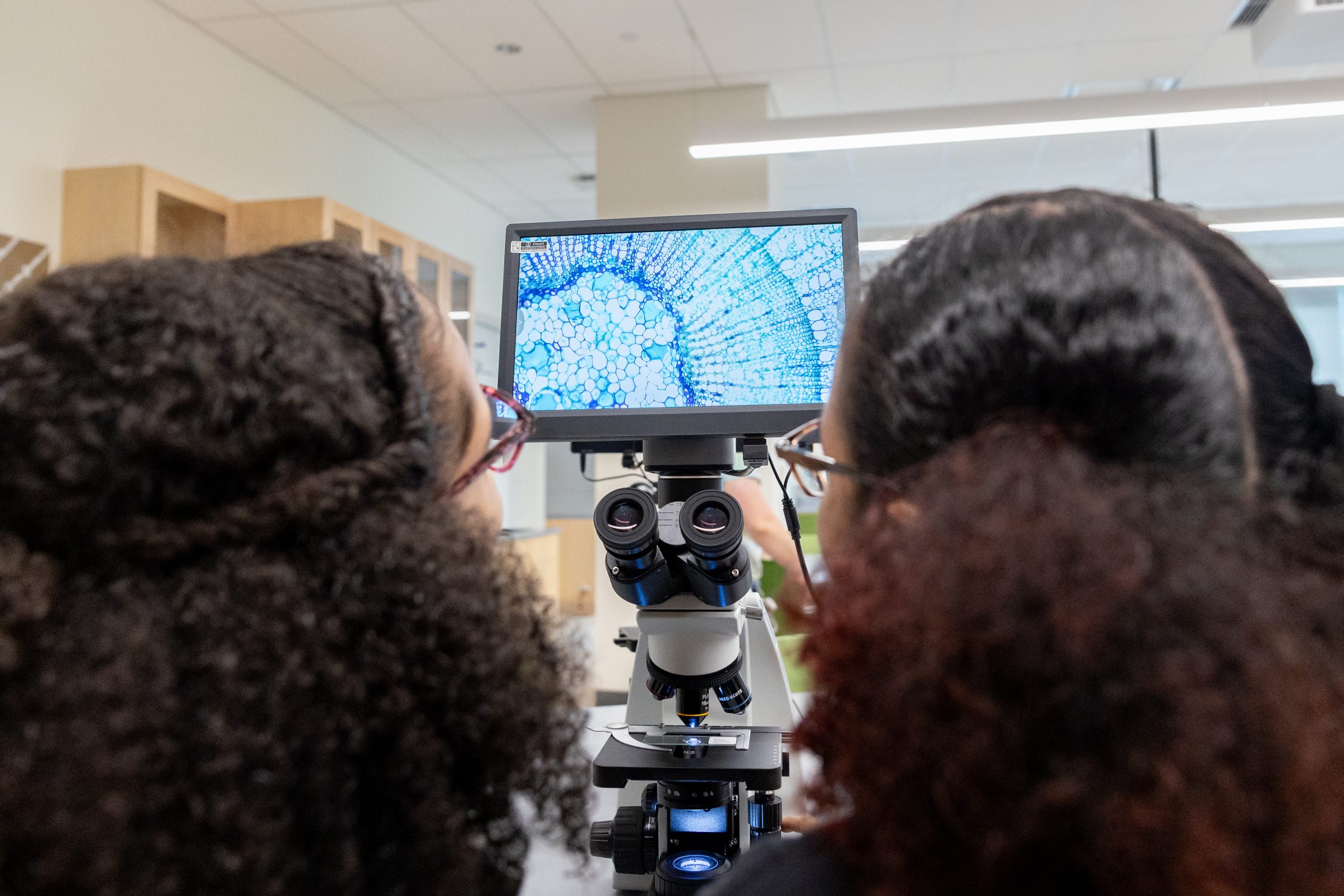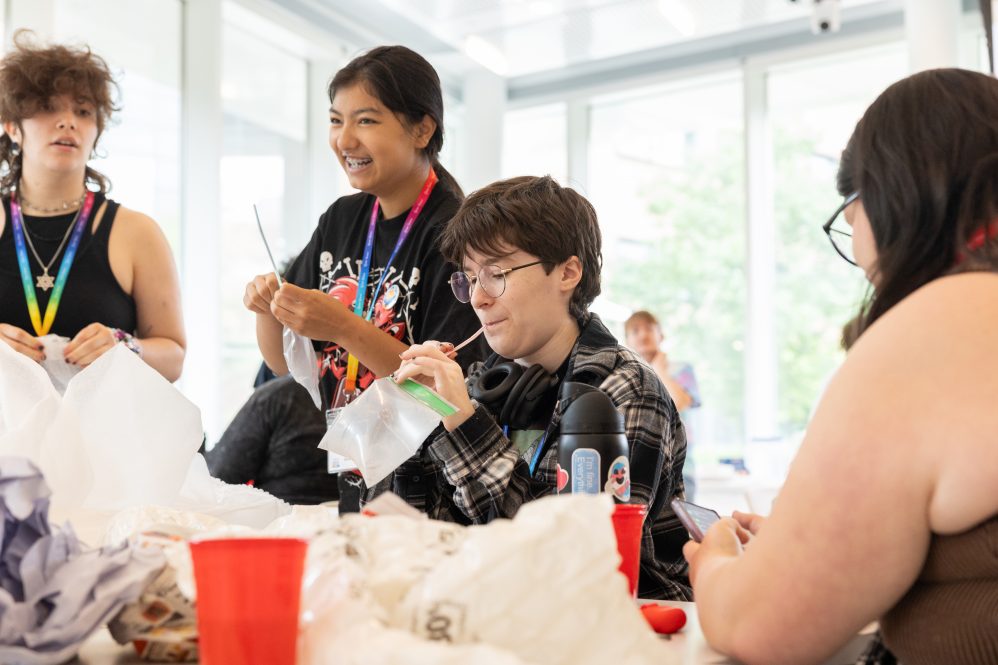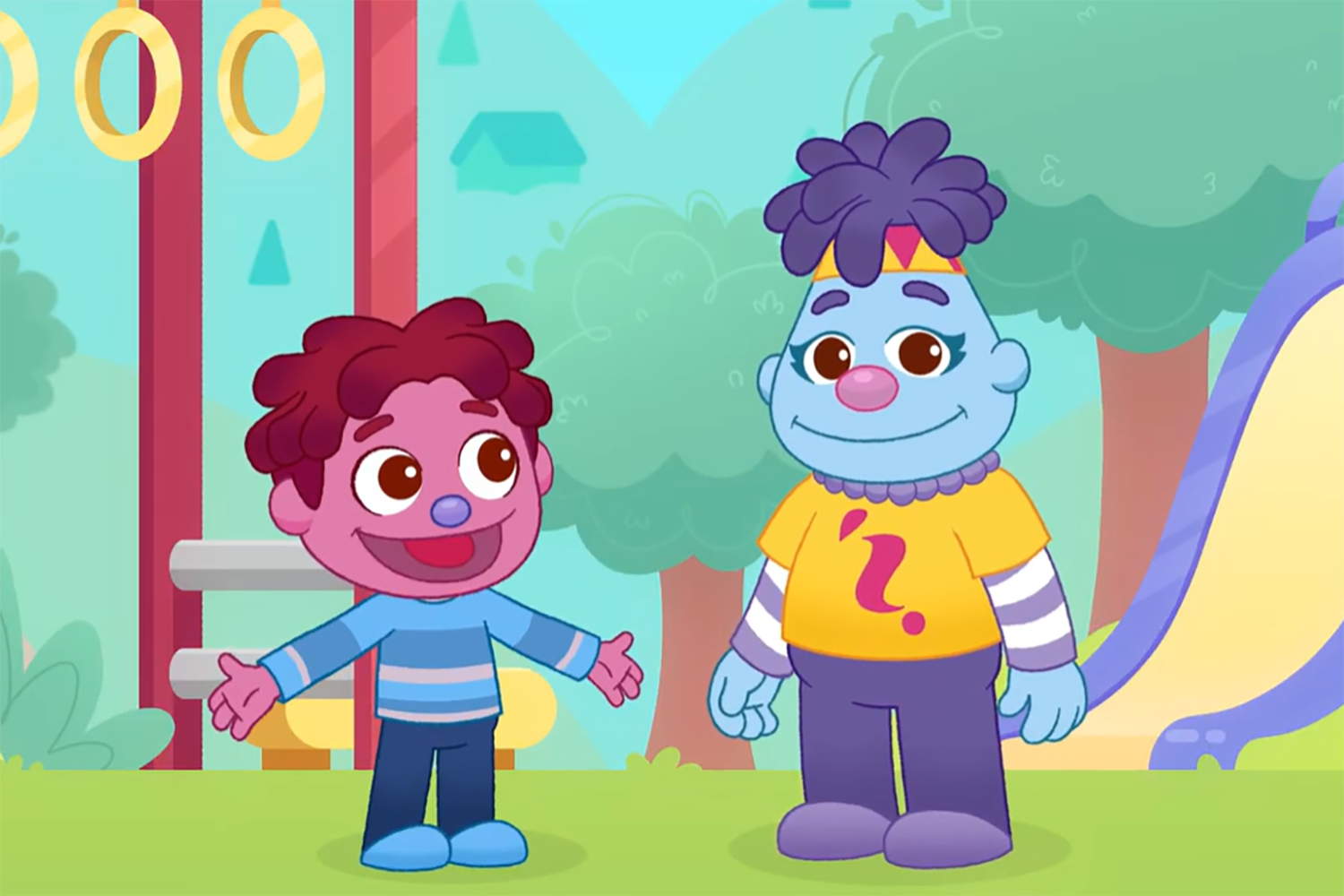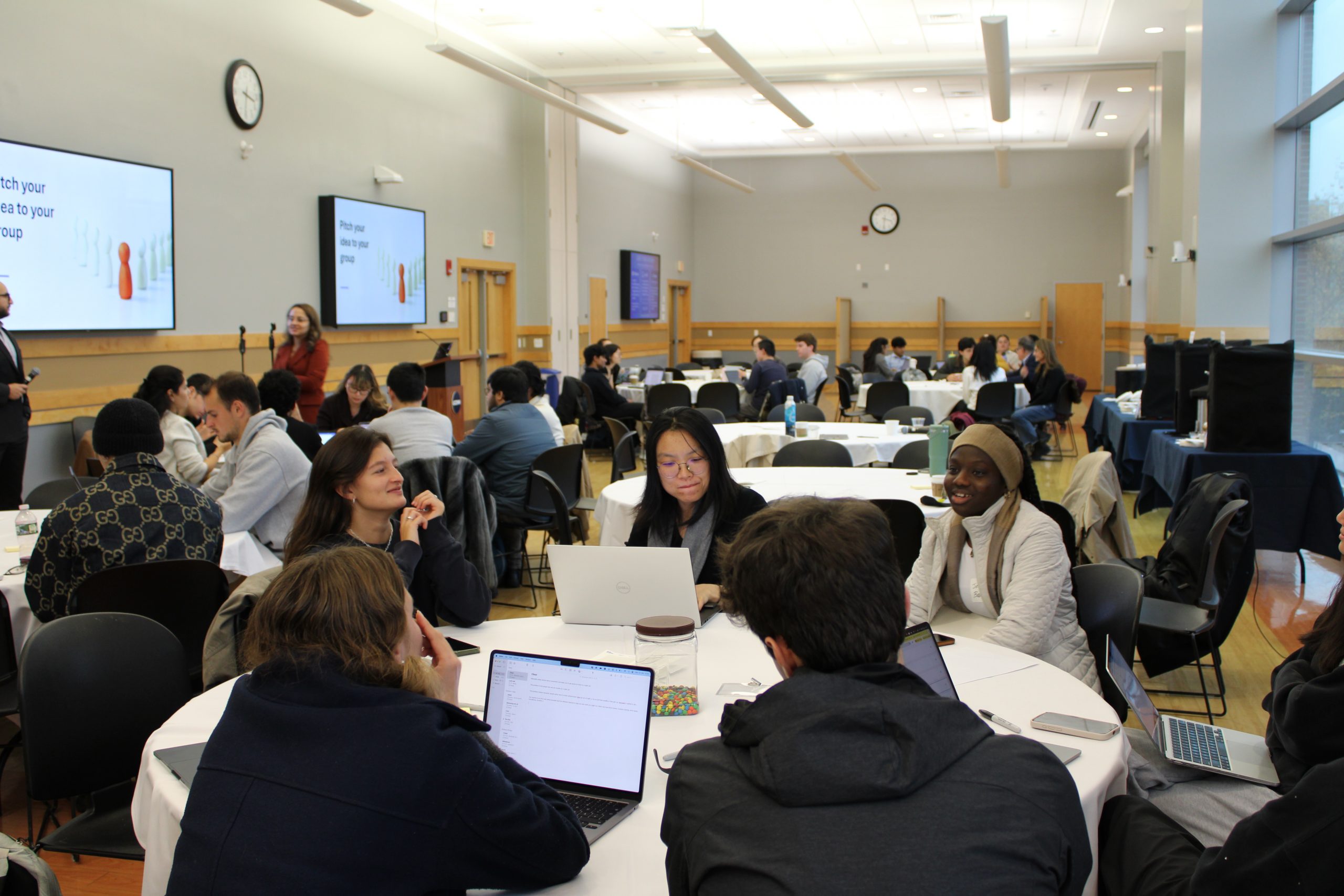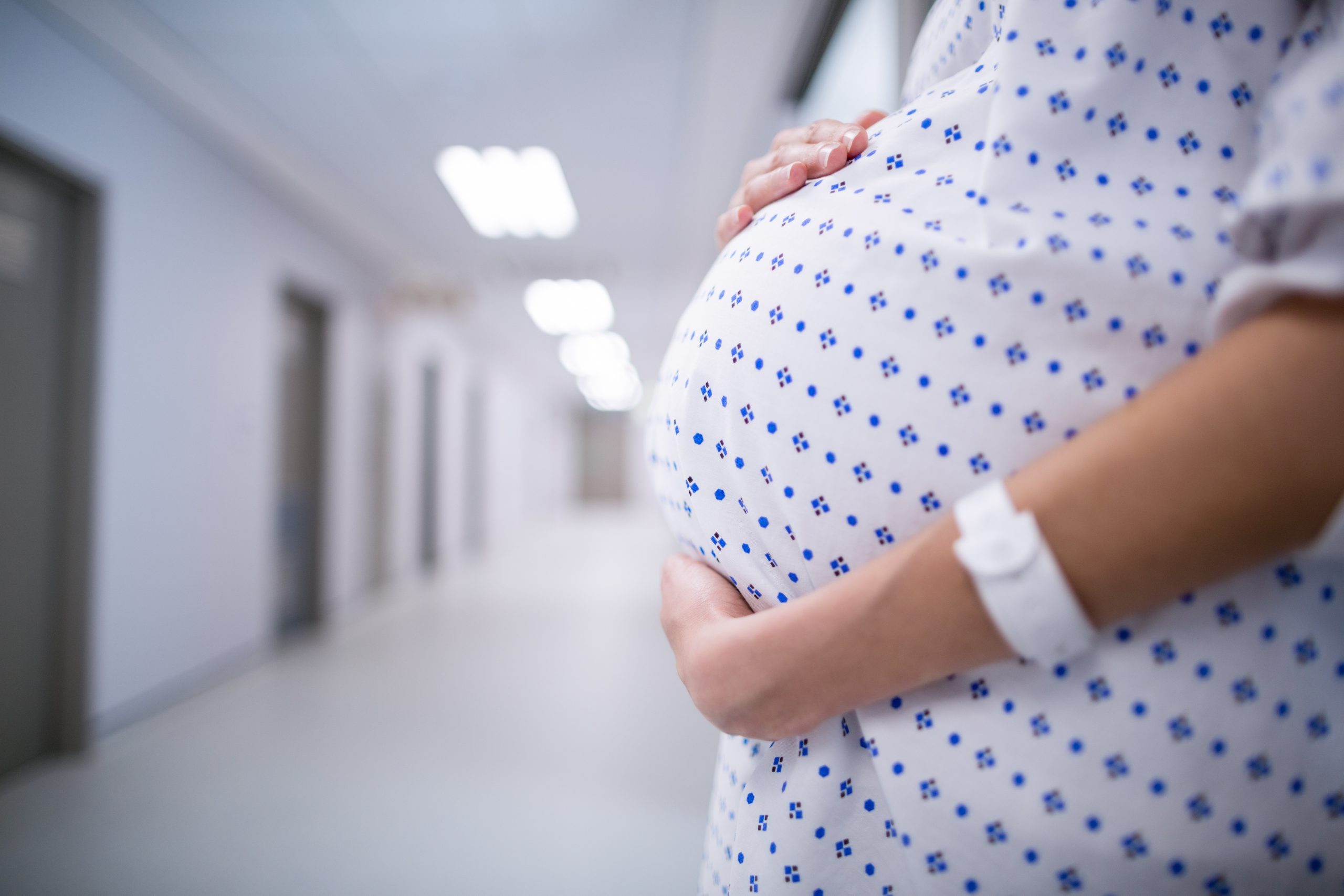The fourth annual UConn Queer Science Conference took place on Sunday, June 8, 2025, welcoming high schoolers from across Connecticut to a fun and free day filled with hands-on learning opportunities.
Attendees learned about genetics in a workshop on fly phenotypes. They looked directly at the sun (safely!) through the lens of a solar telescope. They learned microscopy techniques, and the more intrepid dissected sheep brains to learn about neuroscience, one of UConn’s core research strengths. They took a tour of UConn’s pathobiology facilities, which help monitor human, animal, and environmental health across the state.
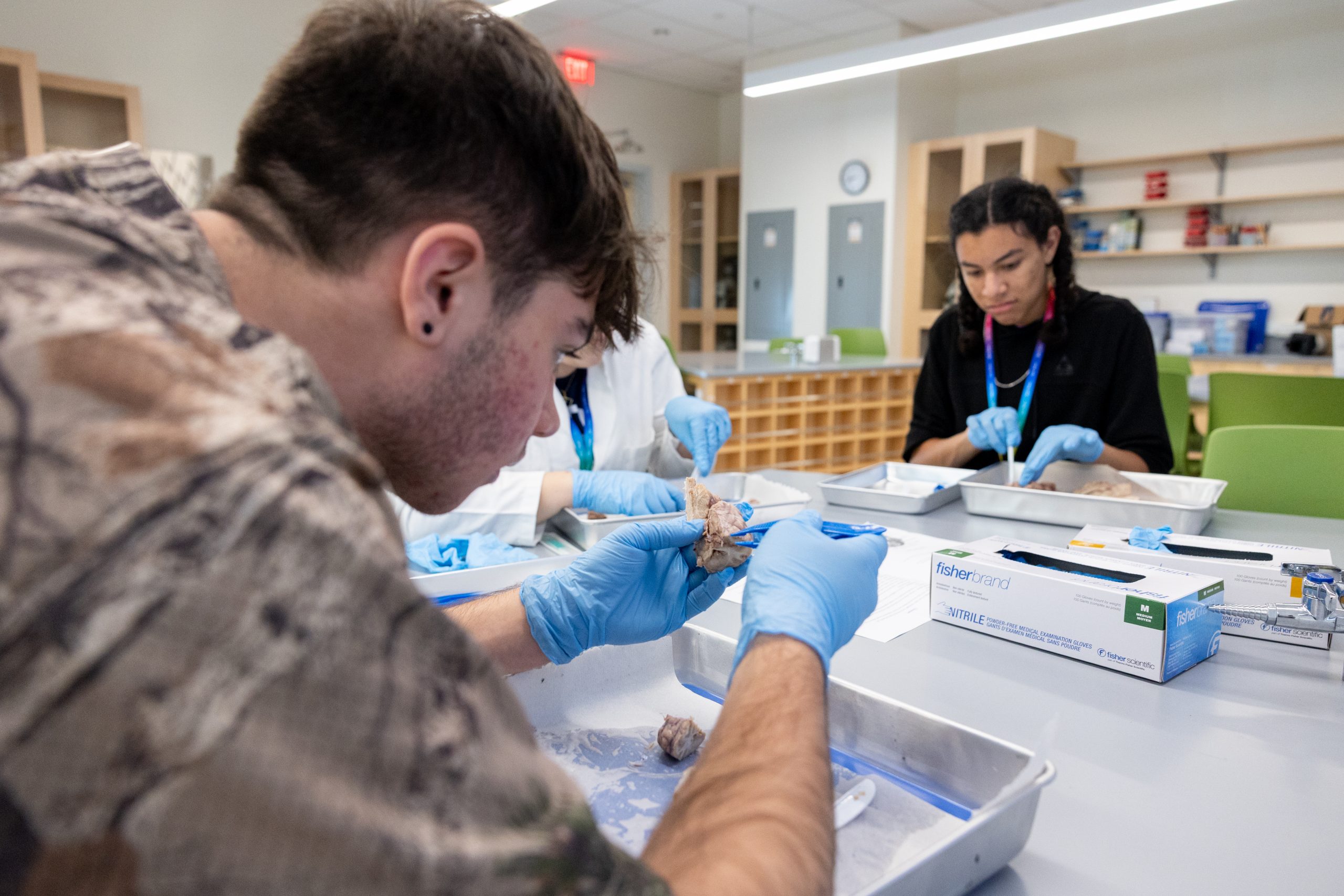
They took a structural biology workshop focusing on virus capsids (the protein shells encasing viruses) and how they form. They also tie-dyed keepsake T-shirts and witnessed the wonders of liquid nitrogen on ice cream. Finally, they tested their engineering mettle with the annual egg-drop competition. Who could design the apparatus that could help an egg drop from the greatest height without breaking?
This year, the event was chiefly organized by Michael Vaccaro, Jr, a fourth-year structural engineering Ph.D. candidate. Queer Science is housed under UConn’s Vergnano Institute for Inclusion, which provides funding for catered meals, and supported by an all-volunteer team of students. Undergraduate volunteers assist with logistics, and graduate students lend their scientific expertise to the hands-on workshops.

“In the past, I’ve run demos myself,” says Vaccaro. “It’s very different now to be the person walking around who’s making sure everything’s going well. We start planning in the fall semester, and we have monthly meetings with volunteers. The spring semester is all about making sure people show up – emailing high school principals, guidance counselors, and teachers.”
In addition to cold-emailing Connecticut high schools and posting flyers in public places, the Queer Science team also utilized “warm connections,” according to Jacob Pfund, a fifth-year physics Ph.D. student.
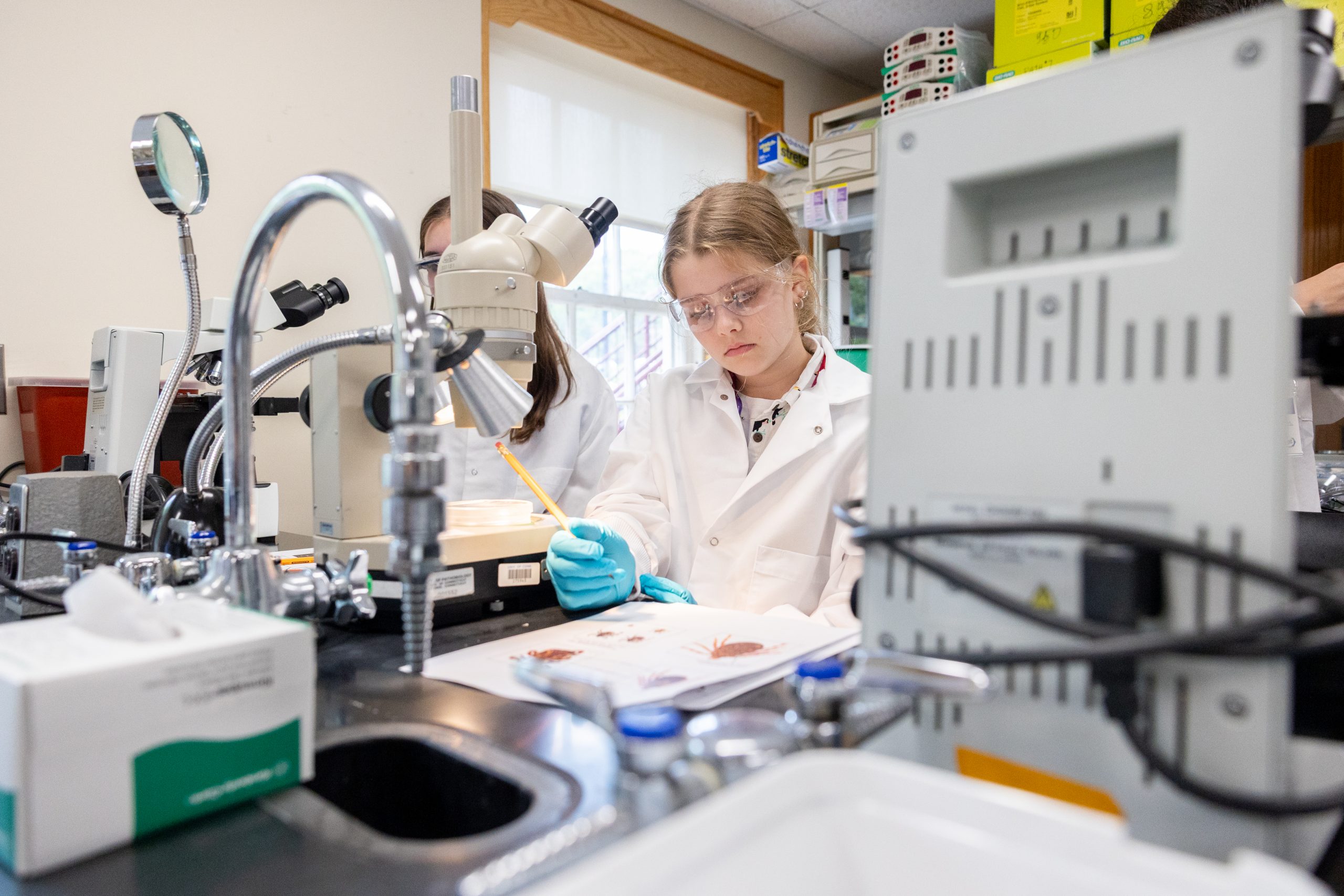
“We do a lot of science shows at middle schools,” says Pfund, “so for the last couple of years we’ve been trying to target the eighth graders and be like, ‘Hey guys, next year, you can come to UConn and hang out with us.’”
The organizers also helped spread the word about Queer Science at SOGIECon, the world’s largest LGBTQIA+ youth convention, in Hartford.
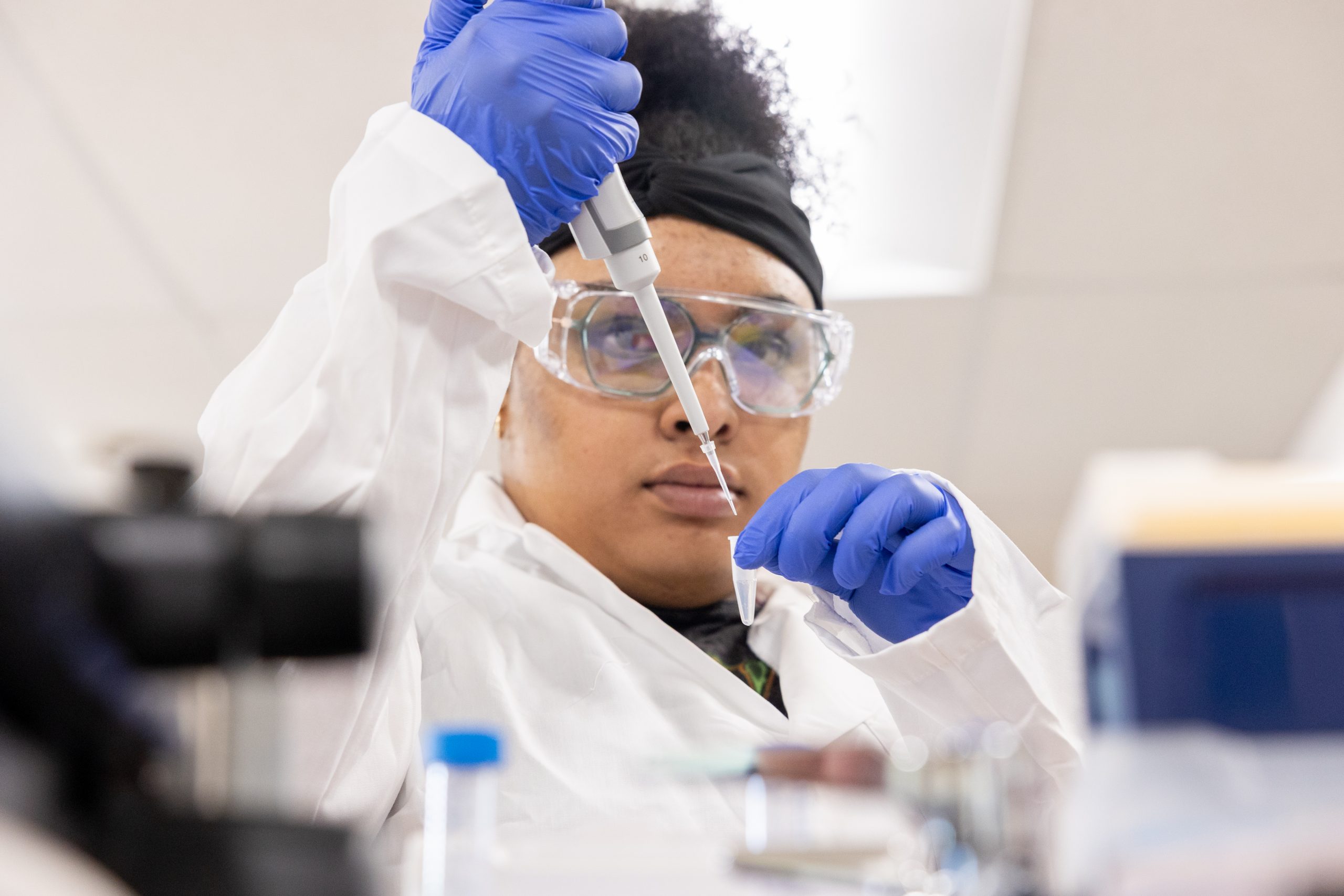
Celebrating the Diversity of Science
Queer Science is designed to introduce participants to the wide rainbow of possible career paths in science, and its organizers similarly run the gamut of disciplines, identities, and backgrounds.
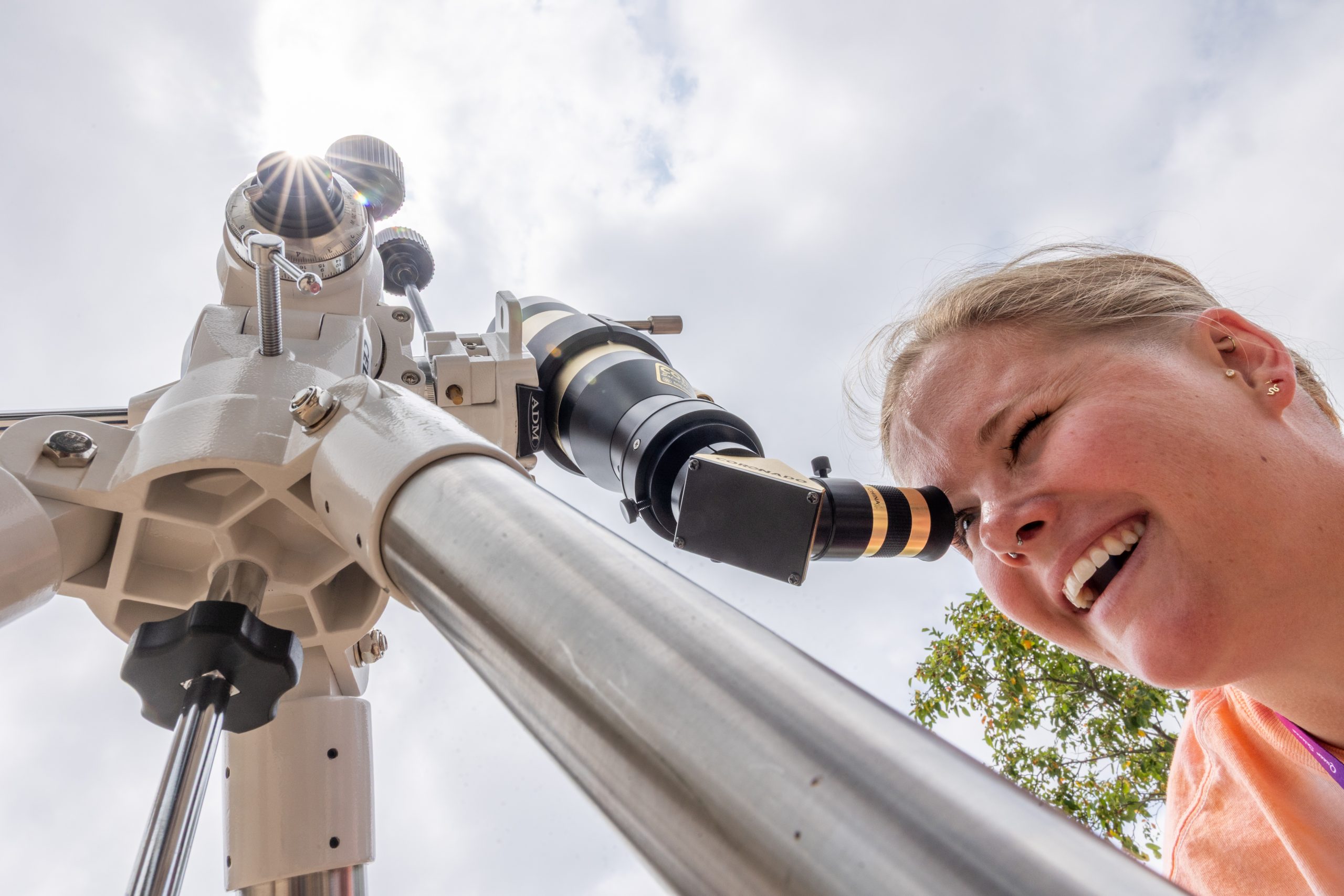
“Getting here [to UConn], I felt like people were very open, and that I finally didn’t have to hide myself,” says Nicole Tillquist ‘23 Ph.D., who is now a postdoc in the lab of animal sciences professor Kristen Govoni, associate dean of academic programs in the College of Agriculture, Health and Natural Resources (CAHNR). “I’m still one of the only queer students on that side of campus” — meaning the east side, where agricultural buildings and facilities cluster around Horsebarn Hill — “but I’ve had lots of undergraduates come up to me and say, ‘Hey, I’m also queer!’ I think they’re just excited to see representation.”
Shania Kalladanthyil, a third-year molecular and cell biology Ph.D. student, ran this year’s fly genetics workshop. She says connecting with other queer scientists at UConn has been “a really validating and really enjoyable experience,” and she’s excited to pay it forward to the next generation.
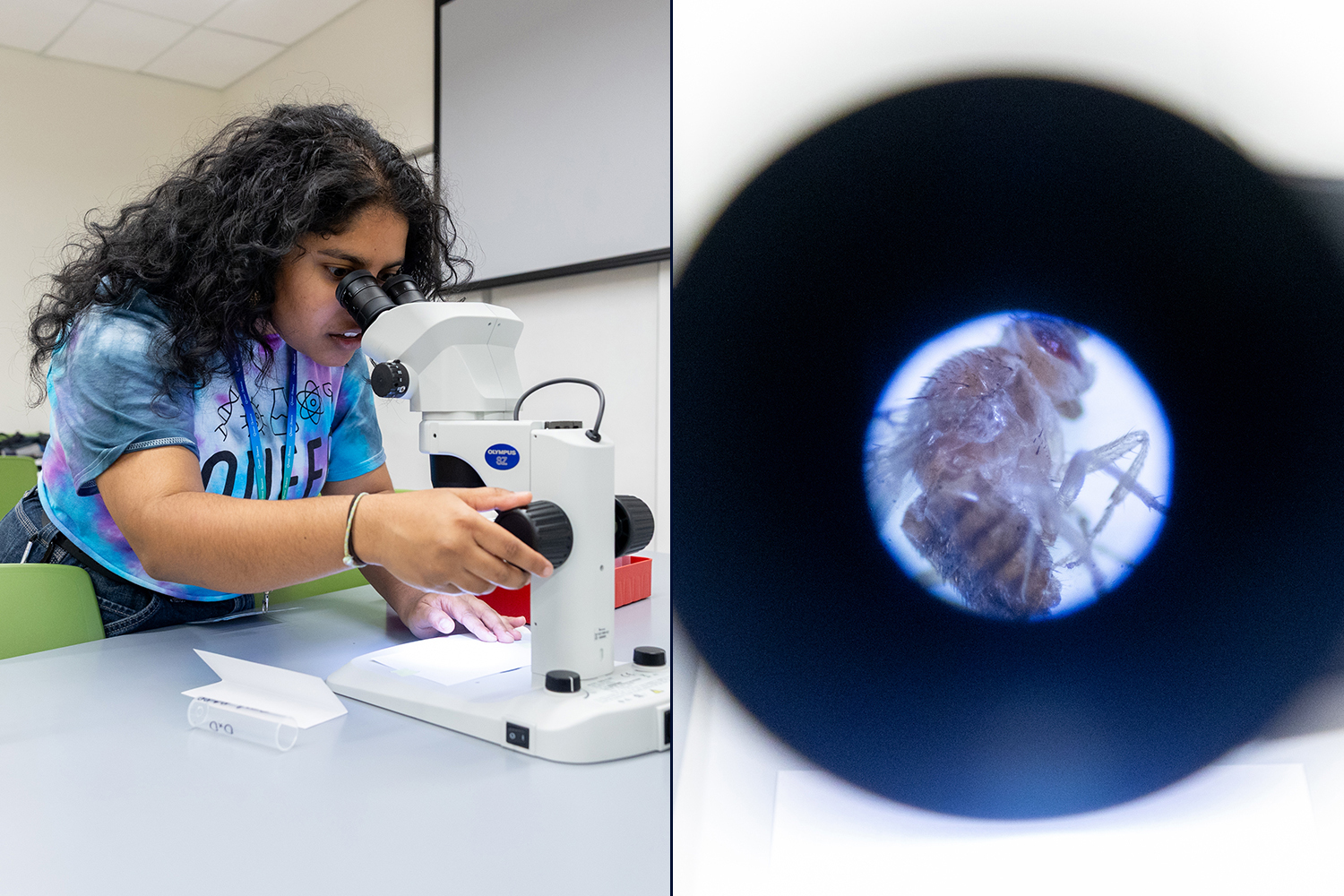
“I was not aware that ‘scientist’ was a job that I could do,” says Kalladanthyil. “My entire family is in health care – like, everyone’s a nurse — and so I was unaware that that was something that I could do for the longest time, let alone be queer and do it. I had no one to ask questions about this growing up. So, I’ve loved being able to reach out and interact with students who come from different backgrounds, who aren’t aware of science as a career path.”
One of this year’s volunteers was a former attendee: Oliver Przech ’27 (CAHNR), now an undergraduate student focusing on pathobiology, came to the first Queer Science Conference in 2022 as a student at Farmington High School. He says this year’s event was a “full circle moment” for him.
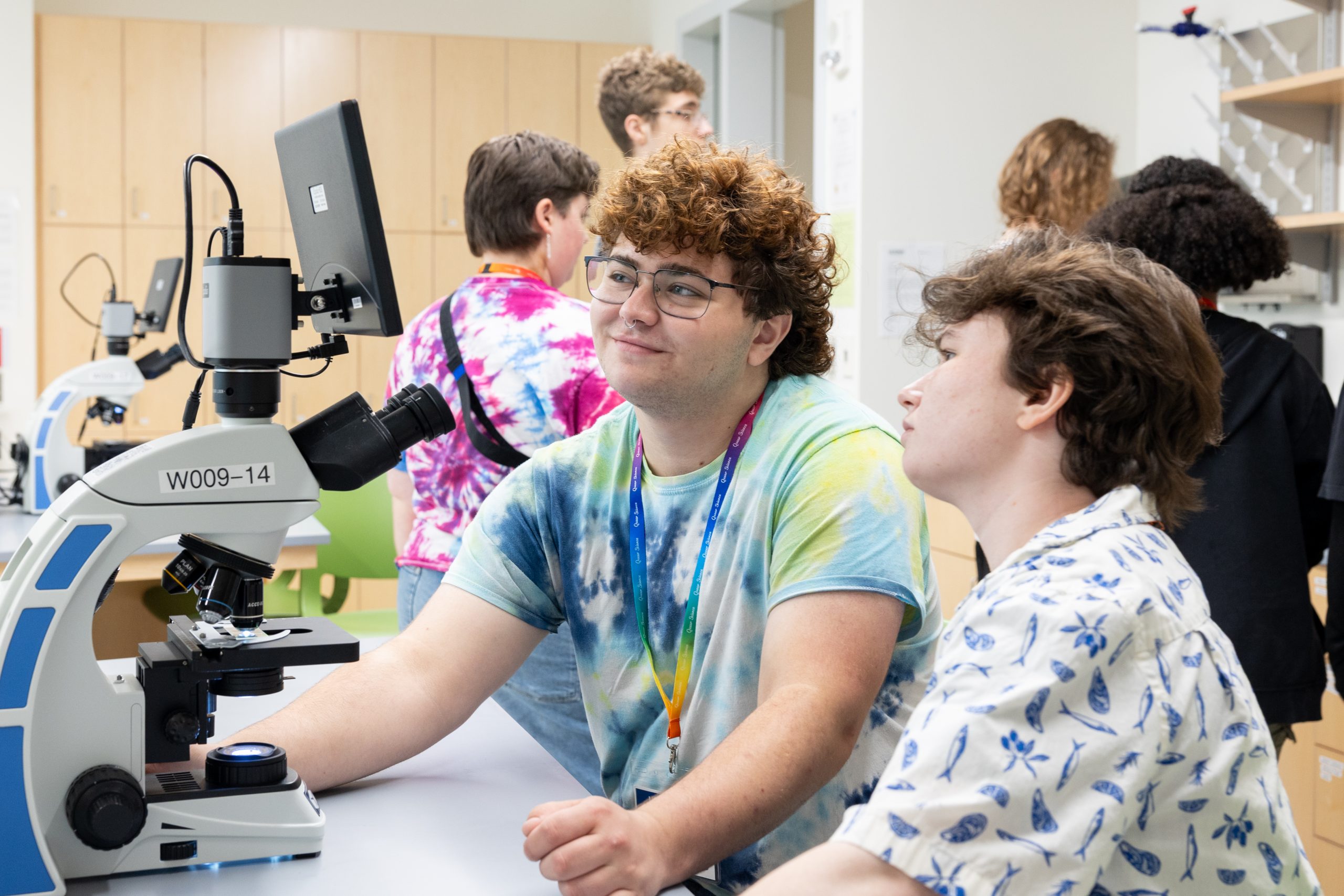
“It’s really important to me that other people have a better time than I do, especially in science,” says Przech, adding that being able to show both identities as a queer person and a scientist at the same time — rather than one or the other — makes scientists such as himself feel even more supported within the industry.
Pfund recalls that at his own high school, “Being queer was not an issue, but being queer in science did not exist. Seeing people that are like you in that field, it helps you envision yourself there.”
